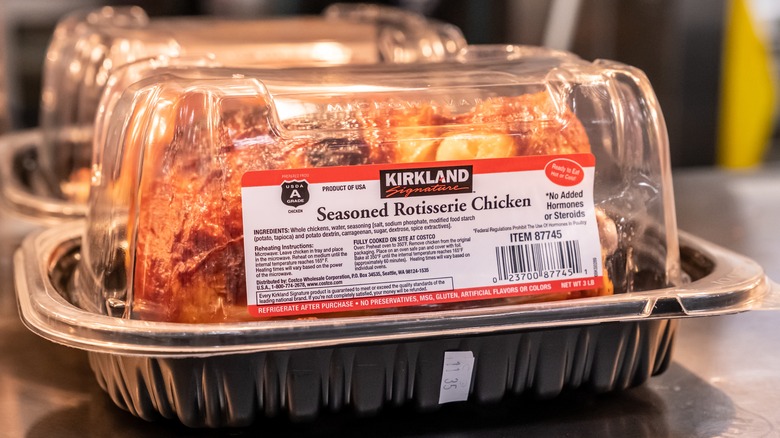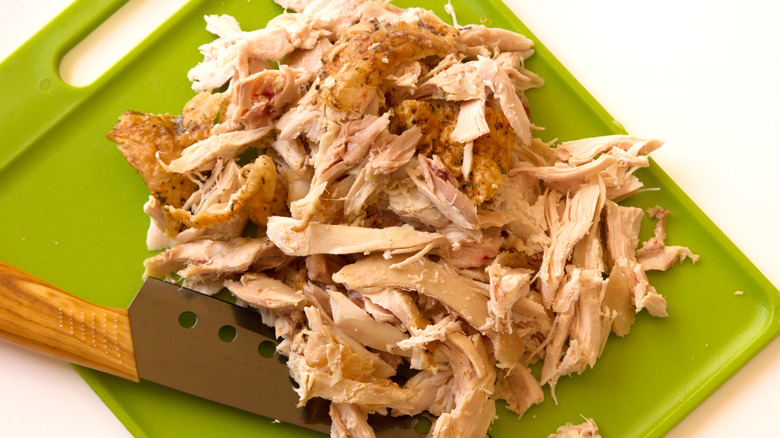Why Costco's Rotisserie Chicken Have Only A 2-Hour Shelf Life
Unless you run a boarding house, you likely don't need to visit Costco multiple times a week to replenish your groceries and household supplies. However, the chain's rotisserie chickens are reason enough to drop by, even on a busy weekend. The famously cheap $4.99 birds are an incredible deal for consumers, and to make sure that the product's quality matches up with its unbeatable price, the company puts a strict limit on its shelf life.
To maintain Costco's high standards, rotisserie chickens on display are removed and replaced by a freshly-cooked batch every two hours. You can actually tell that a fresh lineup has been put out by listening to the sound of a bell chime near the deli section. Each clamshell package of chicken is also time-stamped, so employees know precisely when each bird came out.
At first glance, this rule it may seem wasteful or excessive, but it's actually a smart move by Costco — one that not only ensures the chickens taste their best, but that they're safe to eat. The United States Department of Agriculture recommends refrigerating cooked chicken within two hours to prevent the growth of illness-causing bacteria. Although Costco's rotisserie display keeps the birds at 140 degrees Fahrenheit (outside the temperature "danger zone" at which bacteria multiply the fastest), there's always a possibility that a customer may change their mind and return the now room-temperature chicken from their cart. The two-hour limit ensures customer safety and satisfaction.
Making the most of Costco's rotisserie chickens
What happens to Costco's rotisserie chickens are they've sat out for two hours? The chain doesn't just throw them away: The birds are deboned and repurposed into products like soups, salads, and simple 46-ounce packages of the meat. The latter retails for around $18.71, according to Costco's website. Compared to $4.99 for the whole chickens, the repurposed meat is much more profitable. Consumers can't begrudge Costco for the markup — the chain reportedly loses $30 to $40 million a year due to their ultra-cheap whole chickens, according to The Seattle Times.
If you love the convenience of Costco's chicken, but want to keep costs down, purchase a freshly-prepared bird and remove the meat yourself. Using a plastic bag hack, you can even debone rotisserie chicken without getting your hands dirty. Just place the bird in a resealable gallon-size baggie and massage the chicken until the meat falls off the bone.
Whether you keep it whole or debone it, be sure to refrigerate the meat as soon as you get home. It's easy to reheat rotisserie chicken to prepare your favorite recipes, like chicken noodle soup, enchiladas, or curried chicken salad. Cooked poultry can safely be kept in the fridge for up to four days, or frozen for extended storage, giving you plenty of time to take advantage of Costco's inexpensive option.


